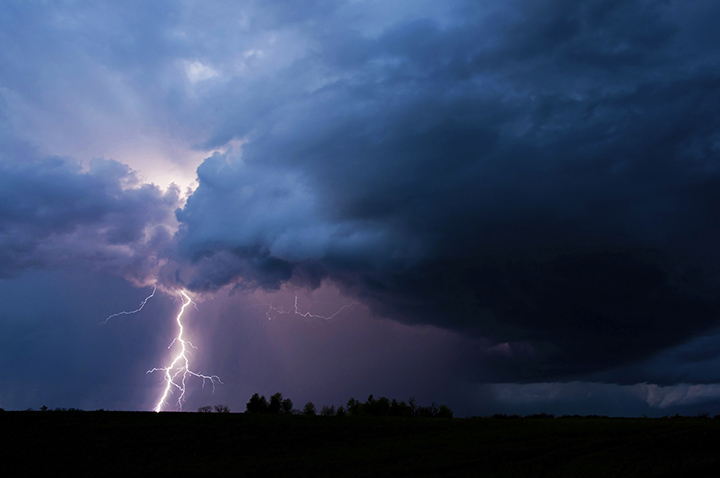What is high-speed automatic reclosing?
If lightning strikes a 110 kilovolt overhead line, the resulting spike in voltage triggers an electric arc across the insulator between the conductor and the tower. The voltage in the line maintains the arc. The arc can be extinguished by switching the voltage off with protection relays and circuit breakers. After this, we try to restore the voltage automatically with high-speed reclosing 0.7 seconds later.
What is delayed automatic reclosing?
Delayed reclosing is used after 60 seconds if high-speed automatic reclosing has failed.
High-speed and delayed automatic reclosing are also available on 400 kilovolt lines but the time and method of reclosing are a little different.
How many disturbances occur and what causes them?
There are about 250 disturbances in Fingrid’s overhead lines each year, but approximately 90 percent of these can be handled quickly using high-speed reclosing or delayed automatic reclosing.
In addition to lightning, trees falling on the lines are a particular problem. In this case, reclosing won’t help and technicians have to be sent into the field.
Especially in the north, snow and ice cause some problems because their weight pushes the shielding wires close to the phase wires. The purpose of these shield wires is to trap flashes of lightning and guide their current safely to the ground.
What are short circuits, earth faults and three phase faults?
A short circuit occurs when the phase wires touch each other, which increases the current to a high level.
An earth fault occurs if a conductor or even two conductors are electrically connected to the ground – usually because of lightning.
Three phase fault is rare but can happen when, for example, a high-energy flash of lightning triggers an electric arc between all phases via the transmission line tower.
These questions were answered by Expert Jari Honkanen from Fingrid’s Relay Protection group.






